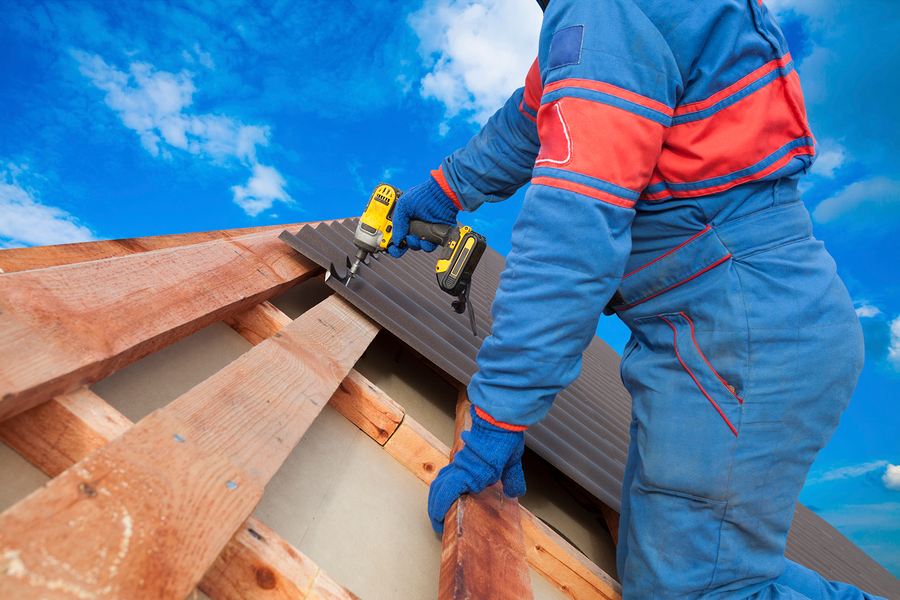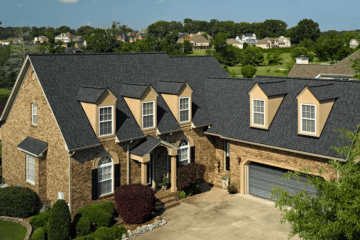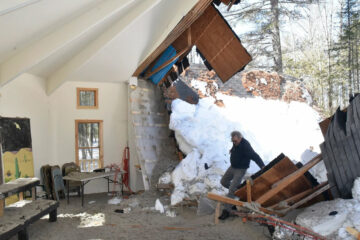Metal Roofing: The Different Types of Metal

Over the past 40-years, metal roofing has become the go-to choice for many homeowners roofing needs. Not only do they require little to no maintenance, but they also help conserve energy and cut down on expensive electric bills. Another reason metal roofing has become a popular option is because of their life-span. Most metal roofs will outlive the homeowner before it even needs to be replaced. Let’s take a look at the most common types of materials used for metal roofing.
Types of Metal Roofing
Copper
For decades, copper roofing was the metal of choice, due to its ability to last over 200-years. It’s 100-percent recyclable, making it a great option for those looking to buy environmentally friendly materials. In addition, its low melting temperature makes this type of metal very soft, preventing excessive noise during extreme weather. Plus, copper has a very attractive appearance that makes it the most desirable metal roofing material on the market.
However, despite its many unique qualities, copper does have some downfalls. For starters, it’s rather expensive to use, especially for covering a large area like a roof. In fact, copper costs more than any other type of metal roofing material. In addition, since it’s a softer metal, it’s prone to denting from large hail or falling tree limbs. Moreover, a copper roof must get installed by metal roof specialists who’ve worked with copper materials in the past.
Zinc
Zinc isn’t as popular today, as it was a few decades ago. It has a low melting point that makes it one of the softest metals in the industry. It’s easily manipulated to create a variety of designs and shapes, giving each room its own distinct look. Aside from its pliable nature, a zinc roof can last over a 100-years. More so, every zinc panel is 100-percent recyclable, making it ideal for an eco-friendly home.
As with most roofing materials, a zinc roof also has its own negative aspects. The biggest disappointment seen with this material is how easy it is to damage. Its vulnerability to damage becomes an even bigger concern when considering its large price tag. Being the second most expensive option, repeated damage could cost homeowners hundreds of dollars in repairs.
Aluminum
Aluminum is the most widely used and most sought after material used in metal roofing. It’s extremely popular among residents who live near salt water, due to its natural resistance against both salt and water corrosion. This type of roof allows homeowners to paint the panels for a better overall look, or leave it bare to give their home a more natural look. More so, its durable construction lasts decades without needing to be replaced, and it can withstand extreme weather better than other materials.
Unfortunately, an aluminum roof has some downfalls that might sway homeowners to use a different material. While its more cost-effective than copper or zinc, aluminum materials are still somewhat expensive. This leads to manufactures using thinner panels that can get damaged by strong winds or large-sized hail. Additionally, the natural patina that develops on aluminum materials can hurt the homes overall aesthetic appeal.
Steel
Steel roofing gets made from recycled metals like iron, alloy, and other hard metals. It’s one of the most durable metal roofing options, and it’s one of the most affordable options in the industry. There are three different types of steel roofing to choose from including:
- Weathering steel
- Galvanized
- Galvalume
Galvanized steel roofing has a single layer of zinc on top that helps protect the layer of steel underneath. This helps prevent corrosion and prolong the roofs overall life-span. Galvalume roofing uses both zinc and aluminum to coat each panel and protect it from corrosion. However, using both these materials as a coating helps improve the panels overall appeal. Lastly, weathering steel get used for an accent piece, instead of covering an entire roof. Its outer layer will rust to protect the other layers from corrosion.




